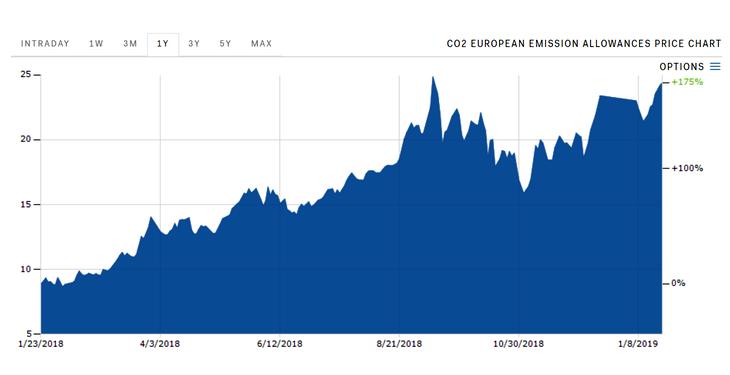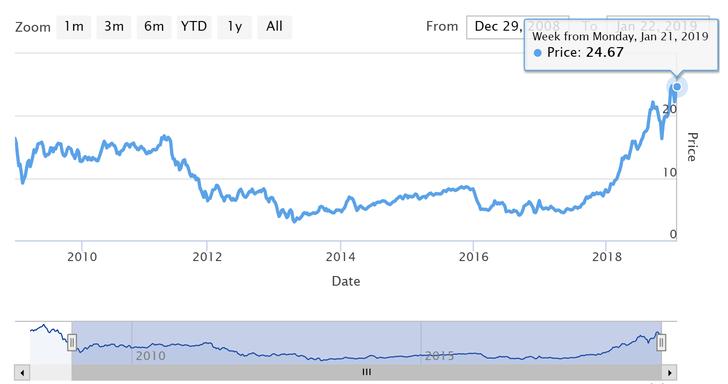The market price of CO2 allowances nears the 25 euros per unit peak, recorded in September 2018. Prices have risen by about 50% in the last three months, following an accelerated growth trend that began in January 2018. Last year, the trading price of CO2 certificates climbed more than three times, from less than 8 euros/ton in January 2018, to over 24 euros/ton, in December 31.
The evolution was widely expected as the Market Stability Reserve (MSS), established at European level in order to reduce the imbalance in the carbon market, entered into force on 1 January 2019.
From 2019 to 2023, the percentage of the surplus to be placed in the Market Stability Reserve will be doubled from the initially agreed 12%, to 24%. Moreover, as of 2023, reserve holdings exceeding the previous year’s auction volume will no longer be valid. The European Commission anticipated in December 2018 that these reforms would lead to placing almost 265 million allowances (16% of the surplus) into the Market Stability Reserve from January to August 2019 instead of auctioning them. This would reduce the auction volume over the first 8 months of 2019 by some 40% compared to the corresponding volume in 2018. Thus, a squeezed supply of carbon allowances will continue to contribute to ever higher market prices.
The current price level exceeds the estimates made six-month ago by Mark Lewis, managing director and global head of research at Carbon Tracker, in an analysis published by the Financial Times; he anticipated that the EUA prices would reach €15/ton by year-end 2018, €20/ton in 2019, and €25/ton in 2020.
The biggest impact is felt by the big fossil-based power generators, mainly coal, but also by the electricity consumers in respect to the share of carbon certificates in their bills.
Boza: CE Oltenia finished last year in red, due to emissions certificates’ costs
At the same time, more expensive carbon certificates should help accelerate the transition to a low-carbon economy by incentivizing long-term investment in less polluting technologies.

